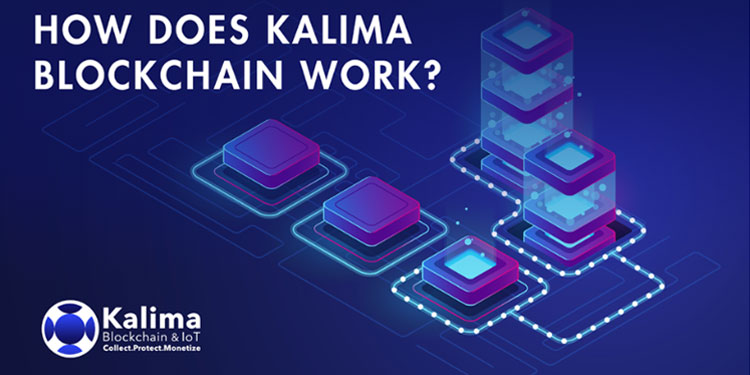Kalima blockchain has developed a dedicated IoT blockchain solution for industrial companies and asset owners, which is ready to be deployed at a global scale. Kalima, a 3rd generation blockchain, offers a new way to independently and securely collect, manage and monetize enterprise data.
McKinsey estimates the potential economic impact of IoT applications to be as high as $11.1 trillion per year in 2025, and the E.U. Commission stated that 80% of the industrial data currently generated within the EU is never used (representing €270 billion). To Kalima, this gap is explained by the fact that current data management solutions lack many important aspects, including end-to-end data management and monetization.
After 10 years of development, Kalima Blockchain is ready for global scaling and thus is launching an Initial Coin Offering to introduce the KLX, its native token designed to monetize enterprise data including data coming from IoT devices. Currently, at the private sale stage, the public sale will take place in Q3 this year. Initially, up until the end of 2023, the KLX will be an ERC-20 compatible token after which it will be bridged to a native token in the Kalima MainChain.
In this regard, the KLX will have multi-purpose in manoeuvering within the Kalima ecosystem. The main uses are detailed below:
- KLX is a utility token and the basic accounting unit used to build on the Kalima ecosystem. Its first function is to pay transaction fees on Kalima Blockchain ecosystems.
- The Kalima blockchain is a decentralized ecosystem composed of the Kalima MainChain, enterprise-private, and industry-public blockchains, dubbed “PrivaChains”. KLX will allow users, businesses and developers, to obtain their own PrivaChain and to create decentralized applications (Dapps).
- The monetization of any data can notably be done utilizing KLX tokens with integrated decentralized oracle networks. Oracles connects real world data to the Kalima Blockchain, through which businesses can monetize all or part of their data such as carbon footprint or ESG data.
- KLX tokens can be used to acquire Validation nodes and Master nodes, which are both in charge of securing the network. KLX token will be used for validator remuneration.”
- Every holder possessing over 0,2% of KLX in circulation can create their own staking pool to become a validator and obtain the rewards associated with securing the network.
- Any user can contribute to the successful running of the network by staking their KLX tokens. In other words, KLX holders can delegate their tokens to a validator’s staking pool for a period of time, and earn rewards in proportion to their contribution to that staking pool.
- KLX owners will have the possibility to sell their tokens on decentralized exchanges, soon followed by centralized ones.
Kalima’s blockchain is built to handle very large amounts of sensitive data generated by industries collecting data via IoT sensors and analyzing that data in real-time. The PrivaChains can be linked to one another or to other leading public chains (Tezos, Lightning, Polygon, and Cosmos hubs), boosting Kalima’s industrial adoption.
The European Commission said, “80% of all data is expected to be processed in smart devices closer to the user, known as edge computing in 2025.” With Kalima Blockchain embedded into IoT devices (gateways) and in mobiles, Kalima client side smart contracts can process this data at the edge creating value that can be collected at oracle’s level. Oracles can be managed by PrivaChain owners or by partners through solutions like Chainlink Oracles
Stephane Dejean, CMO of Kerlink, who is an early member of the Kalima blockchain said, “While the Helium blockchain is used to reward contributors for providing hotspots to power The People’s Network, the Kalima blockchain is used in a different manner. IoT sensors will offer real-time, trustworthy, and genuine data on this blockchain, which will benefit smart contracts first.”
With the recent development of new reporting frameworks within the Environmental, Social and Governance (ESG) ratings, businesses are required to openly disclose their data on sustainability commitments, ethical operations, and social practices, making ESG data collection, management and analysis a multi-industry use case.
Kalima’s objective for the near future is to focus on providing qualified and traceable data for ESG ratings, reporting, and ESG data monetization.
About Kalima
Kalima Blockchain consists of both a Kalima MainChain and a network of decentralized blockchains known as Kalima PrivaChains. It provides an interconnected blockchain concept as a new paradigm for solving the decentralization objective and increasing scalability, adopting a paramount feature from blockchains such as Cosmos and Polkadot. PrivaChains allow users to independently own, govern and manage their blockchain and the data stored on it, notably through dapps, all the while maintaining data confidentiality.
As the company reaches its 10th anniversary, and after partnerships with several industrial companies such as SPIE, Kerlink (prominent IoT gateway provider), Kenza DAO, Tezos, and more, Kalima has decided to launch its ICO (Initial Coin Offering) in order to fully establish itself as a blockchain industrial company and to raise their operations to new heights. Currently, at the private sale stage, the public sale will take place in Q3 this year.
Company Links & Contact
- Website: https://www.kalima.io/
- Email: info@kalima.com
- Twitter: https://twitter.com/Kalima_KLX
- Telegram: https://t.me/Kalima_EN
- LinkedIn: https://www.linkedin.com/company/26455089/admin/
- Discord: https://discord.gg/qvbyrvaS
- Instagram: https://www.instagram.com/kalima_klx/
